Babywearing – it’s trending, it’s convenient, and it is the perfect way for your baby to stay close to your warm, loving body while you get some seriously backed-up chores done. You are not alone, my friend. We’ve been there way too many times to admit.
But is babywearing safe? What can you do to ensure your baby is never in any potential danger while you both are sneaking in some snuggles, hands-free?
Whether you’re a new parent on the market for a carrier, or a veteran parent who has had one for years, there’s nothing more important than familiarizing yourself with safe babywearing techniques and practices.
Here, you’ll find information that will help keep you and your baby comfortable, safe, and happy while in a carrier – including a practical, and easy to remember system: B Safe & Sure.
Table of Contents
Babywearing safety guidelines – B SAFE & SURE
Use this infographic on YOUR site…
Just copy and paste the code below in the box below into the HTML of your page to show this infographic on your site with the correct attribution! You’re welcome!
And here that is again, just in case your image doesn’t load (or you’re a robot…).
B for Back and Bum. In an upright carry your baby should be well supported at their back and close in against you. The carrier should not allow them to slump or slouch down as this can restrict their airway.
All upright carriers should give good support to your babies bum and legs to encourage the correct leg position. The best position for baby legs in a carrier is spread with knees up above their hips.
S for Snug. A carrier should fit well and all straps should be properly (and not overly) tightened. Slack or improperly fitted carriers will allow for unwanted baby movement. A loose carrier also means an ineffective carrying position for you which can be more tiring and lead to back injury.
A for Airway. Ensure your baby can breathe easily. If a baby is carried in a curled position where their chin touches their chest there is the potential for the carry to hinder their breathing.
F for Face. Keep it visible. The easier it is for you to see you babies face, the easier it is for you to understand their needs.
This might not be possible with certain carries, like forward facing or on your back. However you should always be able to see the face of a baby in a sling carry. Don’t let them turn-in towards you and risk smothering them.
E for Elevated. Keep them close. Front carries should always have your baby positioned high enough up your body so that their head is close enough for you to kiss. Doing this means you can hear them more easily and their weight is positioned properly on your body.
&
S for Squat. Need to pick something up? Squat, don’t bend over. It’s better for you and for baby. If you absolutely have to bend over, make sure you support baby in the carrier with a free arm.
U for Upkeep. Look after your carrier. Periodic checks of seams and buckles to make sure everything looks in good shape will help avoid an unwanted accident.
R for Risks. You can’t do everything with baby in a carrier. No driving for example. Assess the risks. If there’s safety apparatus required for what you’re doing (like a seat belt), you shouldn’t do it with a carrier.
E for Environment. Not too hot and not too cold. A carrier allows you to share a lot of body heat with your little one. Just make sure there’s enough ventilation on a hot day and warmth on a cold one!
Carrier Safety Ratings and Standards
All baby carriers manufactured and made with the intention to sell, must meet specific requirements and standards – usually put forth by the Consumer Product Safety Commission (CPSC). Whenever deemed necessary, new standards can be added by the CPSC in order to ensure the safety of newborns, infants, and toddlers.
In the United States, under the Consumer Product Safety Improvement Act (CPSIA), baby carriers have certain regulations that need to be met when manufactured before being compliant.
At the consumer level, this compliancy breaks down to product labeling, product registration, and something that suggests proper safety testing has been done. Be sure to look for this on your carrier before purchasing!
For soft infant and toddler carriers, the standard includes the following requirements (taken directly from the CPSC website):
- Fastener strength and strap retention – intended to ensure that fasteners do not break or disengage and straps do not slip through fasteners by any significant amount while the child is being transported in the carrier.
- Dynamic and static load testing on seating area – intended to ensure that the child remains fully supported while being transported in the carrier.
- Occupant retention – intended to prevent falls by setting requirements for bounded and unbounded leg openings.
- Warnings – intended to alert the caregiver to infant fall and suffocation hazards and promote safe use of soft infant and toddler carriers.
- Flammability – intended to ensure the product meets the flammability requirements
Other requirements, part of the standard for soft carriers include the limitation of lead in the surface coating, limitation of total lead amount, limitation of phthalate content, package labeling, and testing/certification.
The CPSC further makes a separate standard for slings under the Standard Consumer Safety Specification for Sling Carriers. This standard covers not just ring slings but anything that allows for a semi-reclined position such as wraps, pouches, ring slings and other hybrid carriers. This standard includes certain requirements such as:
- Strength of sling to ensure it can hold 3x the maximum weight suggested on the label
- No tears, breakage, or seam separation is present after testing
- Occupant retention in order to make sure that the child can not fall out of the sling during normal use
- Product should be present with warning labels that include the following information:
- Illustrations to show proper positions for child in a sling
- Warning of suffocation hazard
- Warnings of children falling out of slings
- Reminder to check buckles, straps, snaps, rings and other hardware are intact and performing correctly
Are baby wraps safe?
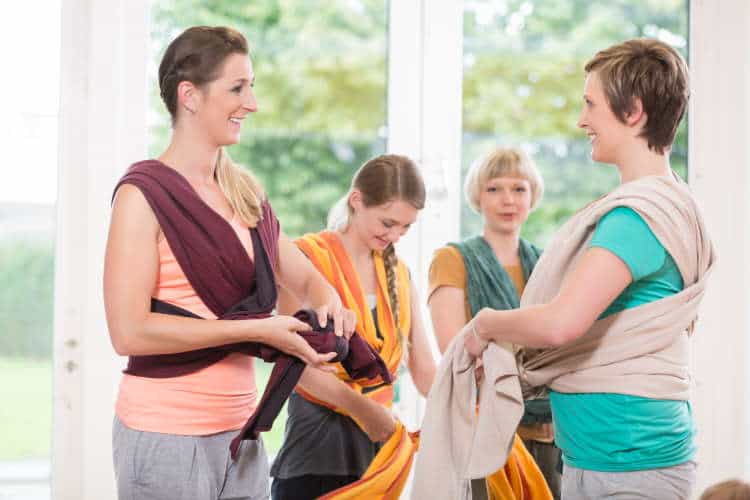
Wraps, and all carriers for that matter, which are manufactured and intended for sale must be compliant with safety regulations, as we’ve already established. The safety, or lack thereof, can then come with user misuse, mishandling, or old and tethered material not strong enough to properly contain a child.
If following all manufacturer guidelines, baby wraps should generally be “safe.” Potential dangers from wraps can arise when the caregiver may neglect certain safety practices.
The number one threat a wrap can pose, when not used properly, is suffocation. Your baby should not be curled in a way that her chin is against her chest – this can block her airways. The rule of thumb here is that there should always be at least a finger’s width of space underneath your baby’s chin.
Always make sure that, unless your baby is actively nursing, her face is uncovered by any fabric or clothing and is facing up so that her nose is never blocked
Using certain positions that are not suitable for your baby’s age is also harmful to her development and overall health. Carrying a newborn in any position where you can not see their face or their legs are not in a natural frog-like position can be detrimental.
Are sling carriers safe?
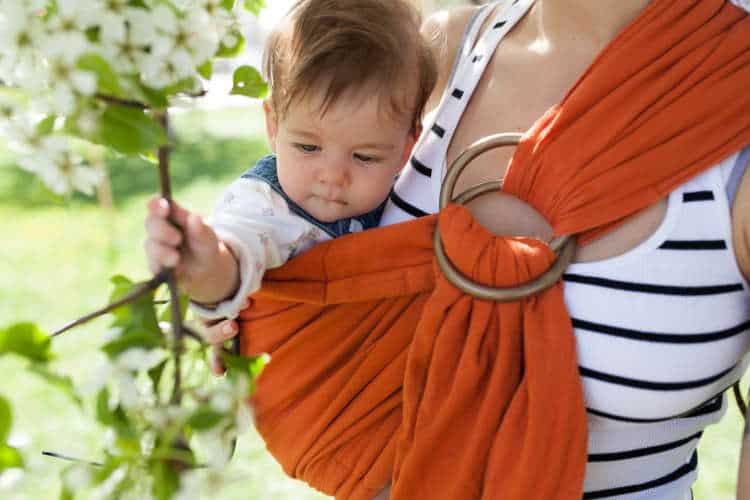
Ring Slings (see our buyers guide) are essentially an over-one-shoulder carrier secured by threading the fabric through the two attached rings. Ring slings can be great carriers as they can be used up to, and throughout toddlerhood. And generally speaking, when used correctly, they are safe. Ring slings are not the only type of sling carrier however. Wraps, pouches and other types of hybrid carriers can be considered sling carries.
Mishaps have happened. And we all want to make sure they don’t happen again. In the past decade, the CPSC had added an additional addendum to baby sling requirements after researching the rate of infant deaths in these carriers.
In this pouch-like carrier, it is easier for babies’ chins to fall down onto their chests and block off their airways when not positioned correctly. This is why it is so, so important to regularly check your baby while in a ring sling. Or any carrier for that matter.
What should absolutely be avoided always are ‘bag style’ sling carriers where the baby cannot be held in an upright position and there is a lot of fabric coming up around the baby’s face. It was this style of carrier (one example is the Infantino Slingrider (which has been recalled)) that really kicked off the standard and campaign around sling safety.
Linnea Catalan – Executive Director – Baby Carrier Industry Alliance (BCIA)
We can’t stress this enough – when used correctly as per the manufacturer’s guidelines, carriers are considered “safe.” Always read the instructions and familiarize yourself with your carrier before wearing.
Are baby carriers safe for newborns?
Each carrier comes with specific requirements when it comes to the minimum/maximum age, height, and/or weight to ensure the safety of your baby. If your baby falls out of these restrictions, then that carrier is not suitable for her.
But there’s a very simple answer to this question, really. If you follow your manufacturer’s guidelines, utilize positions that promote healthy hip and leg placement, and keep baby’s airways open at all times, a carrier that caters to newborns is 100% safe.
Most carriers support a weight range of 8-35 pounds. So if your little one weighs less than that, is born premature, etc. it is best to wait until they reach the minimum weight requirement.
Generally speaking, baby wraps are perfect for newborns (when tied properly) as they support baby’s natural “frog-leg” position.
Is it safe for a baby to sleep in a carrier?
The soothing soft bounce baby gets while you move around in addition to the warmth of your body, inevitably sets the perfect atmosphere for sleep. And if you’re an avid babywearer, you know how easily baby will fall asleep while being worn. Now only if we could get them to do this in their cribs! We digress.
Daytime sleep is considered safe for babies in a carrier as long as you are using it correctly. Are you starting to see a trend here?
In fact, for babies 6 months and under, sleeping on a parent can greatly reduce the risk of SIDS. How?
Studies have shown that when babies stay close to their parents on a regular basis, they begin to follow the same breathing pattern. A steady breathing pattern directly combats SIDS and also helps to decrease the levels of stress hormone in a baby.
How long can babies be in a carrier?
The short answer is this: you can wear your baby in your carrier for as long as both of you are comfortable and content. And now for the not-so-short answer. Babies should not be kept motionless in the same position for “too long.”
And just how long is too long? Well that answer depends again on you and your child. To be safe, it is beneficial to take your baby out at least every three hours. This is when you could give them their feeding, and/or allow them to play on the floor and wiggle their body around.
If you’re wondering how many months/years you can utilize your carrier – well that would depend on the specific carrier and its guidelines. Lots of carriers can be used from the newborn stage up to, and throughout, toddler years! We’d say it’s a pretty good investment.
Can you sit down with a baby carrier?
Now when most people imagine babywearing, they think of running errands all around town, washing dishes, and fixing a sandwich while their baby is being worn. Perhaps not too many people think of sitting down while using a baby carrier.
Most structured carriers, or those with “seats,” make it difficult for the caregiver to sit while babywearing. And babies generally don’t like it when you sit with them in a carrier because it restricts their movements.
But when babies fall asleep in their carriers, you can usually sit down while wearing them. Wraps and ring slings are better at allowing the caregiver to sit as long as baby is still positioned in a healthy way. You can securely “hold” your wiggly baby while freeing your hands for other tasks.
So next time you’re taking a flight, remember to pack your wrap/ring sling – it comes in handy on an airplane. Just remember that you’re usually not allowed to have your baby in any sort of carrier during take off or landing.
Can baby carriers cause hip dysplasia?
Hip dysplasia is a developmental condition in which the hips are not developing properly. The hip is a simple ball and socket joint, and in people with hip dysplasia, the ball does not fit properly into the socket and can be easily dislocated. The bones simply aren’t aligning properly.
And because it is a developmental condition, this can go unnoticed until adolescent and teenage years since signs such as limp walking or hip pain do not show up right away. It is very common for parents not to realize their child even has hip dysplasia.
Baby carriers, contrary to popular belief, do not actually cause hip dysplasia. They can, however, accelerate the condition when present. Babies with hip dysplasia, when placed in carriers in a way that does not support natural leg and hip positioning, can worsen their conditions.
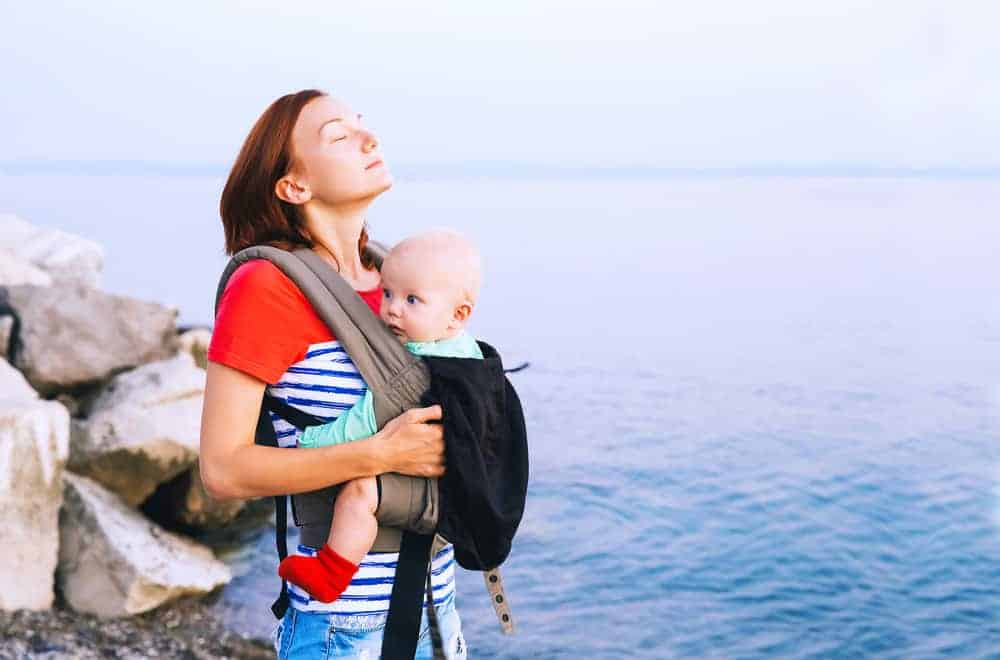
Which carrier is best for baby hips?
Generally, carriers that used safely will encourage healthy hip development. For newborns, wraps and slings are usually best as they are made from material that won’t constrict their movements. Baby can also stretch within the fabric of wraps and slings.
Hip seat carriers are also a good option for encouraging good hip development as they do not force a baby’s legs to extend and be pulled together.
If you are new to babywearing, some great options to begin with, that will ensure healthy hip positioning, include:
- Moby wrap
- Boba wrap
- Sakura Bloom ring sling
Are hip seat carriers safe?
Yes! Once your baby reaches the appropriate age to use them, hip seat carriers can be a great option. They allow your child to wrap their legs around your body. This position supports the natural growth of hip and leg bones.
There are other benefits of a hip seat carrier too:
- It disperses a lot of the spinal pressure and takes the strain off of your shoulders and lower back
- It keeps the wearer in an upright posture
- It is usually very easy to put on and take off
Do baby carriers expire like car seats?
Unlike car seats, baby carriers do not expire. Car seats are made from materials that can break down over time, and in the event of a car accident, an old car seat might not be able to withstand the pressure and cause further damage to the child.
Baby carriers, usually made up mostly of fabric, have an indefinite lifespan. That said, you should regularly check for tears, holes, and other signs of wear and tear that would make the carrier a potential threat.
If you notice anything that may compromise the integrity of your carrier, it is best practice to simply retire it.
The controversial forward or outward facing position!
There are dozens of different carriers out there and many offer more than one position for you to place baby in. Among those is the outward facing position. This is when your baby’s back is against your tummy/chest while she looks out onto the world.
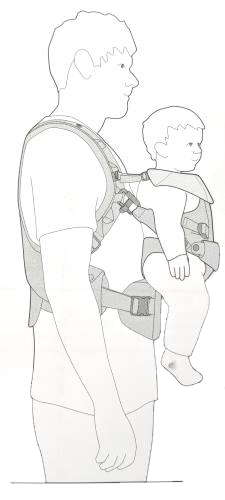
It’s no surprise that many people think of this as the “fun” position since baby gets to see everything you see.
And when most people imagine it, they also imagine a harmless, stimulating experience. This position comes with a definite skepticism amongst the babywearing community and usually a more critical viewpoint from experts.
What age can a baby be forward facing in a carrier?
Manufacturers that make carriers allowing for this position usually tend to stick to the 6 month mark as a minimum age baby can begin facing forward.
But really it’s about the dynamics of spine development, and neck and head support. This should not be used if a baby can not fully control their head. And by that we don’t mean being able to keep their head steady while sitting in your lap. This means they are able to control their neck and support their head movements while you turn briskly, bend over, lean back, etc.
You’d be surprised how many times we’ve seen a baby facing out while their poor head is bouncing and all over the place
Is it safe to carry a baby facing out?
Here’s the lowdown of this position, and we’re giving it to you straight. When babies are placed in carriers, their legs should bend in such a manner that their knees are reaching hip level.
The anatomy of most carriers simply does not allow baby’s legs to reach that high, unless there is an adjustable seat. Not only are baby’s legs dangling, but that contributes to unnatural hip and spine positioning and over time with prolonged use, this could affect natural development.
It also does not offer full head support. So unless your baby has absolutely, positively mastered good head control, this is a no go.
For older babies, who have full head and neck control, this position could work for shorter periods of time – and it can definitely be interesting for them. But even for a 6+ month-old baby, it can very quickly prove to be over-stimulating.
So yes, you could probably utilize this position after a certain age and after certain milestones have been met by you and your baby. But with so many other positions available, why risk it? Like with everything that comes at you in this parenting life, always do what’s best for you and your baby. And that must always begin with their safety in mind.

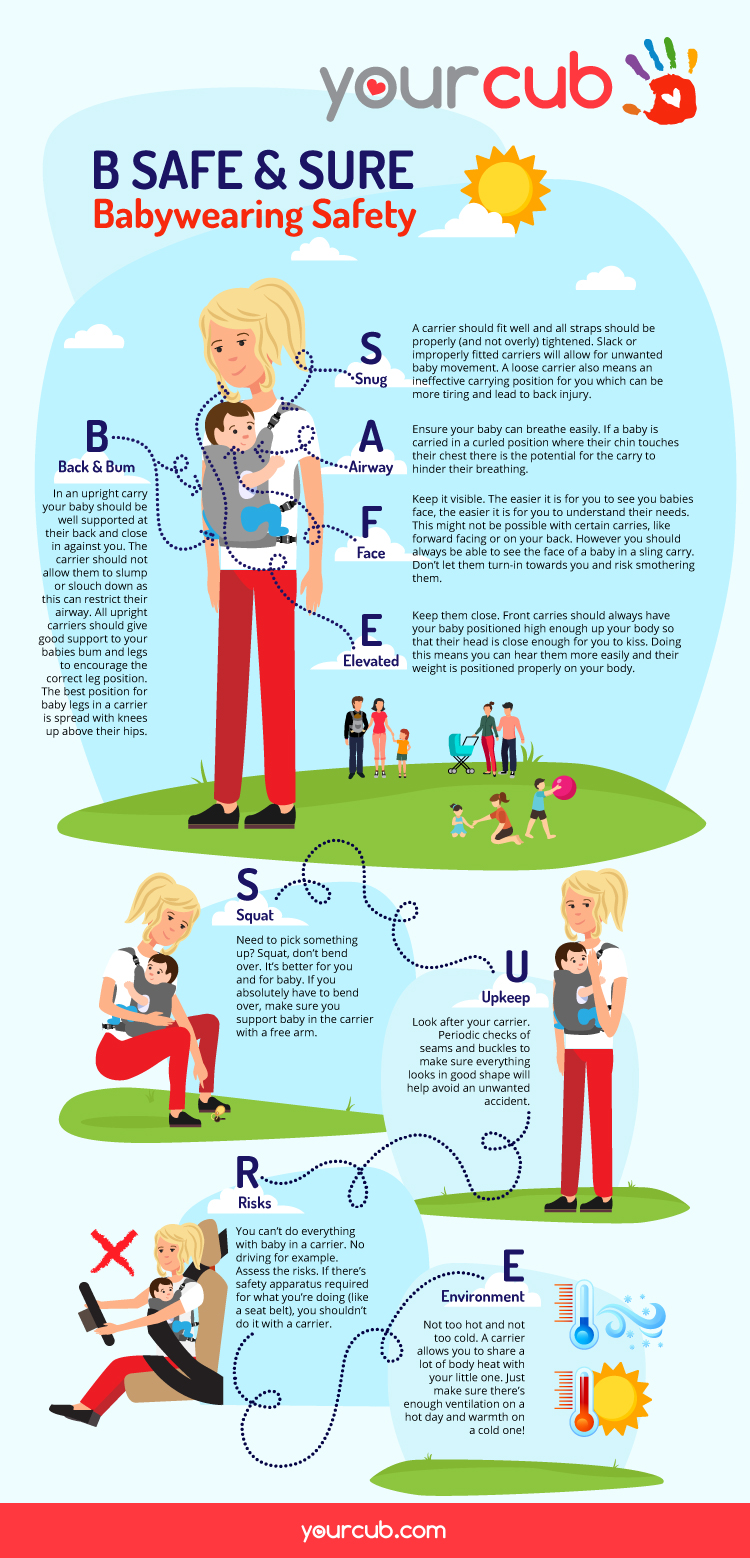

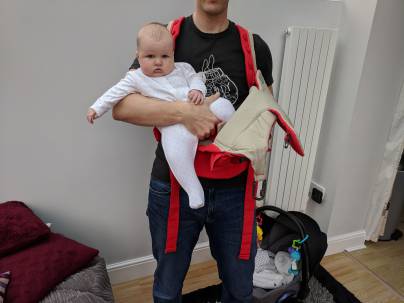
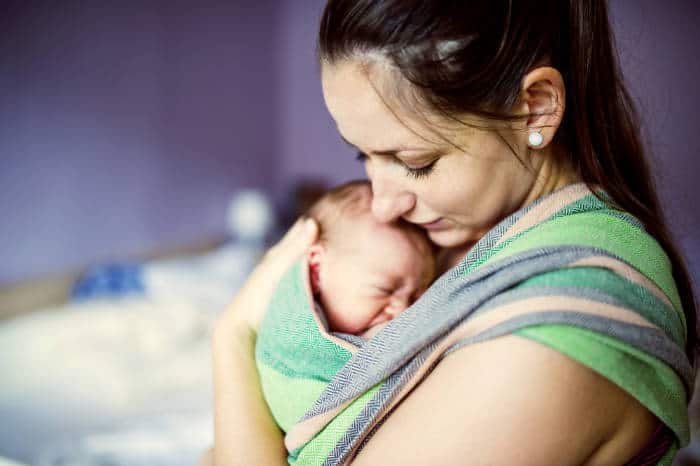
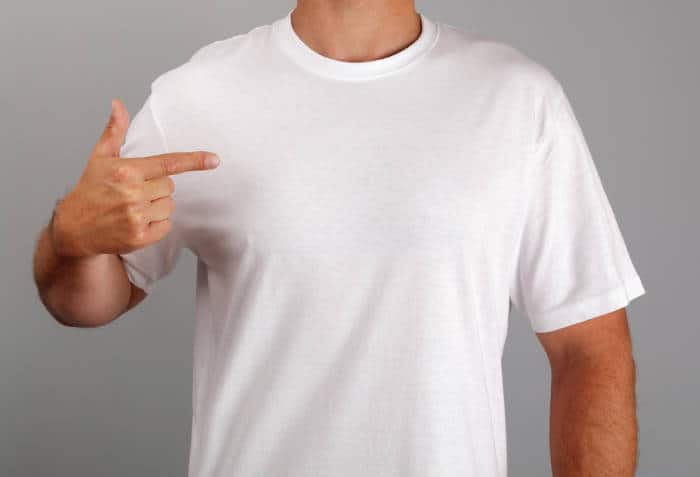
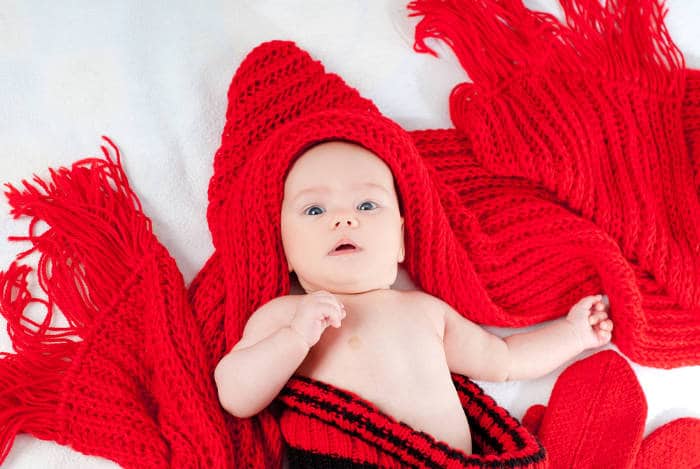
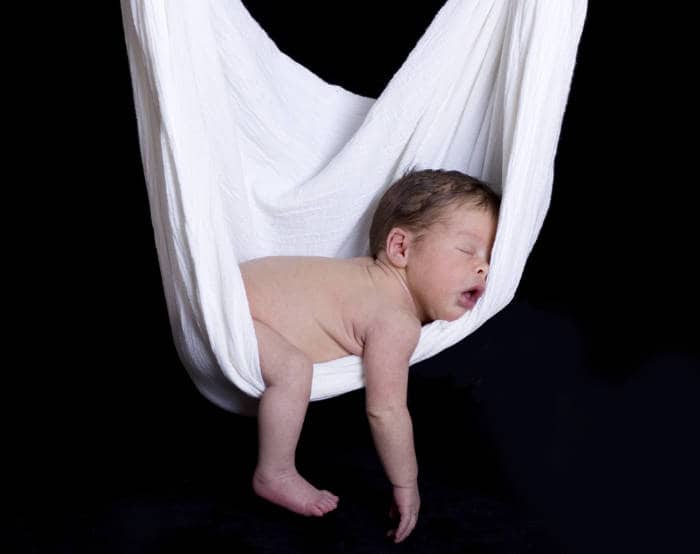
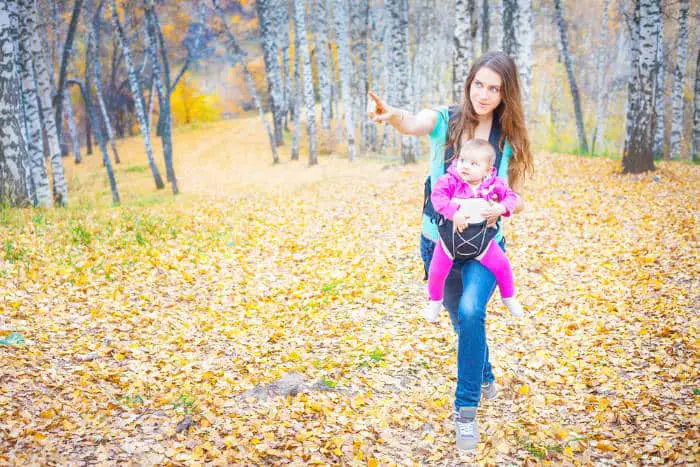
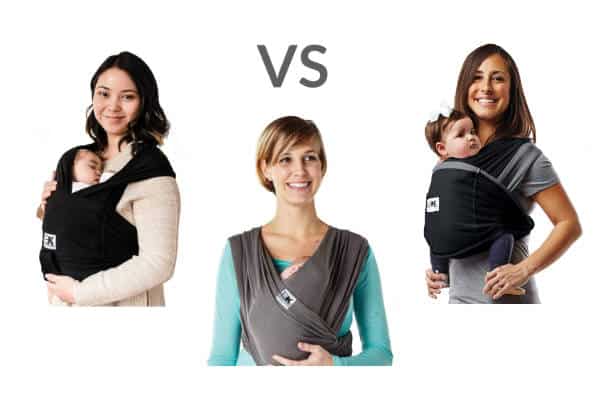
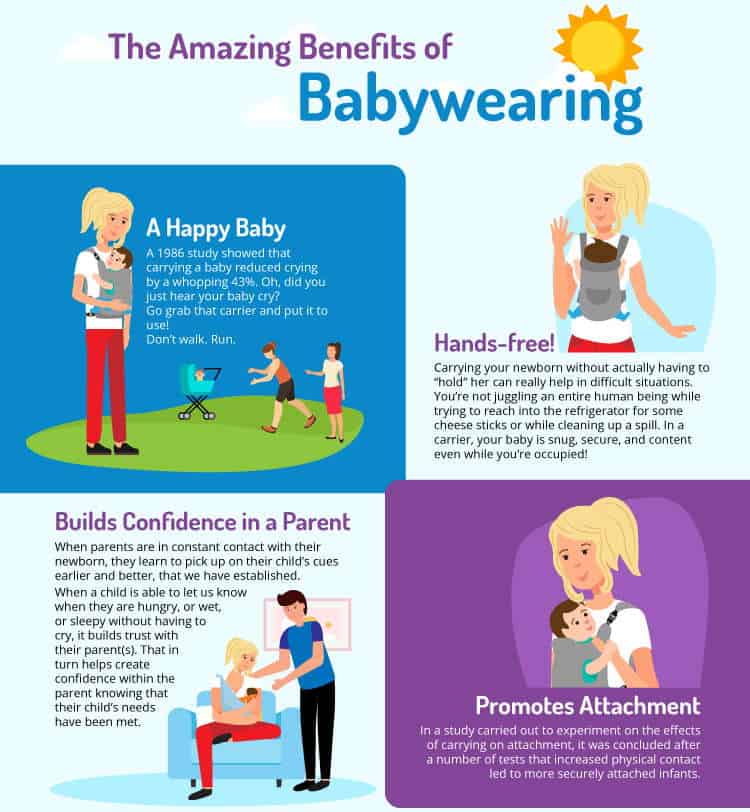
Very interesting and informative, Dave.
Great post Dave! I appreciate that you acknowledge hip seat carriers as being safe, as I have received a lot of flack from some opinionated “Babywearing Consultants” who disagree and believe slings and buckle carriers are best. The baby carrier I designed in collaboration with a manufacturer who has been in the industry for many years – the Hipporoo®︎ 10-in-1 Multifunction – is SGS approved, was thoroughly researched and tested prior to going to market, and is recognized as hip healthy, if used correctly. It provides fantastic support for parents’ backs, is versatile, and alleviates neck and shoulder strain. I agree 100% with your advice on outward facing: not recommended; in my view due to the curvature of the spine -fortunately the Hipporoo supports the knee joint in this position and I guess, at the end of the day, parents should use their own discretion (I personally recommend my clients not use it in this position for longer than 20 minutes at a time). Many thanks again for reaching out, really great read! Would you mind if I share?
Hi Dave,
Thank you so much for this valuable information.
Is there a way to have it in Spanish?
Hi Maria,
We don’t have any Spanish speakers unfortunately, so Google translate would be your best bet!
Dave